In the world of vehicles, not every model is built to handle the heavy demands of daily hard work. Whether it’s towing, hauling, or simply being dependable day in and day out, some vehicles rise to the challenge while others fall apart under pressure.
This article looks closely at two kinds of vehicles: those that shine as true workhorses and those that fail when pushed to their limits.
Workhorse vehicles are trusted by farmers, contractors, delivery drivers, and people who rely on their vehicle for more than just transportation—they need strength, endurance, and reliability.
On the flip side, there are vehicles that may look capable but often prove disappointing when it really matters.
These cars and trucks may suffer from poor durability, weak performance, or constant maintenance issues that make them a bad fit for tough tasks.
Choosing the right vehicle for hard work isn’t just about horsepower or size; it’s about how well a vehicle holds up over time and under stress.
In this article, we will explore five vehicles known for being strong and dependable workhorses and five that fail at living up to their image. Whether you’re buying for business or heavy use, knowing the difference is essential.
Also Read: 5 Cars With Timeless Designs and 5 That Performed Poorly
5 Vehicles That Make Great Workhorses
When it comes to choosing a vehicle that can handle serious work, not every car or truck makes the cut.
A true workhorse isn’t just about big size or high towing numbers on paper—it’s about long-term dependability, durability under stress, and how well it performs in real-life situations.
Workhorse vehicles are the trusted tools of farmers, tradespeople, delivery companies, and anyone who depends on their ride to get the job done—day in and day out. These are vehicles that can be pushed hard and still come back ready for more.
A reliable workhorse can tow heavy trailers, haul large payloads, and withstand all kinds of weather and terrain without breaking down.
It doesn’t just perform well in the first year; it holds up for hundreds of thousands of miles. The parts are strong, the engines are built to last, and the maintenance costs are manageable.
These vehicles are also usually simple to repair and come with solid reputations for reliability, often passed down by word of mouth or trusted in industries where downtime can cost real money.
In this section, we’ll take a look at five vehicles that stand out for their strength, consistency, and endurance. These models have proven themselves in real working conditions—not just in controlled tests.
From heavy-duty trucks to versatile SUVs, these workhorses offer a perfect balance of power, toughness, and reliability.
Some of these vehicles have been around for decades and have earned their reputation over time, while others are newer models that have impressed professionals across different fields.
If you need a vehicle that won’t let you down when it really matters, these five choices represent some of the best workhorses available today. Let’s dive in and explore what makes each one so dependable.
1. Ford F-250 Super Duty
The Ford F-250 Super Duty has long been recognized as one of the toughest and most capable trucks on the road. Built for serious work, it strikes an ideal balance between heavy-duty strength and everyday practicality.
Its reputation for reliability and toughness has made it a favorite among contractors, farmers, and workers across different industries.
When you need a truck that can haul heavy equipment, tow massive trailers, or simply power through tough terrain without hesitation, the F-250 rises to the occasion every time.
The F-250 offers multiple engine options, including a powerful 6.7-liter Power Stroke® V8 Turbo Diesel, known for delivering massive torque and excellent towing capacity.
It can tow up to 20,000 pounds with conventional towing and more with a fifth-wheel setup, making it ideal for transporting work trailers, heavy machinery, or livestock.
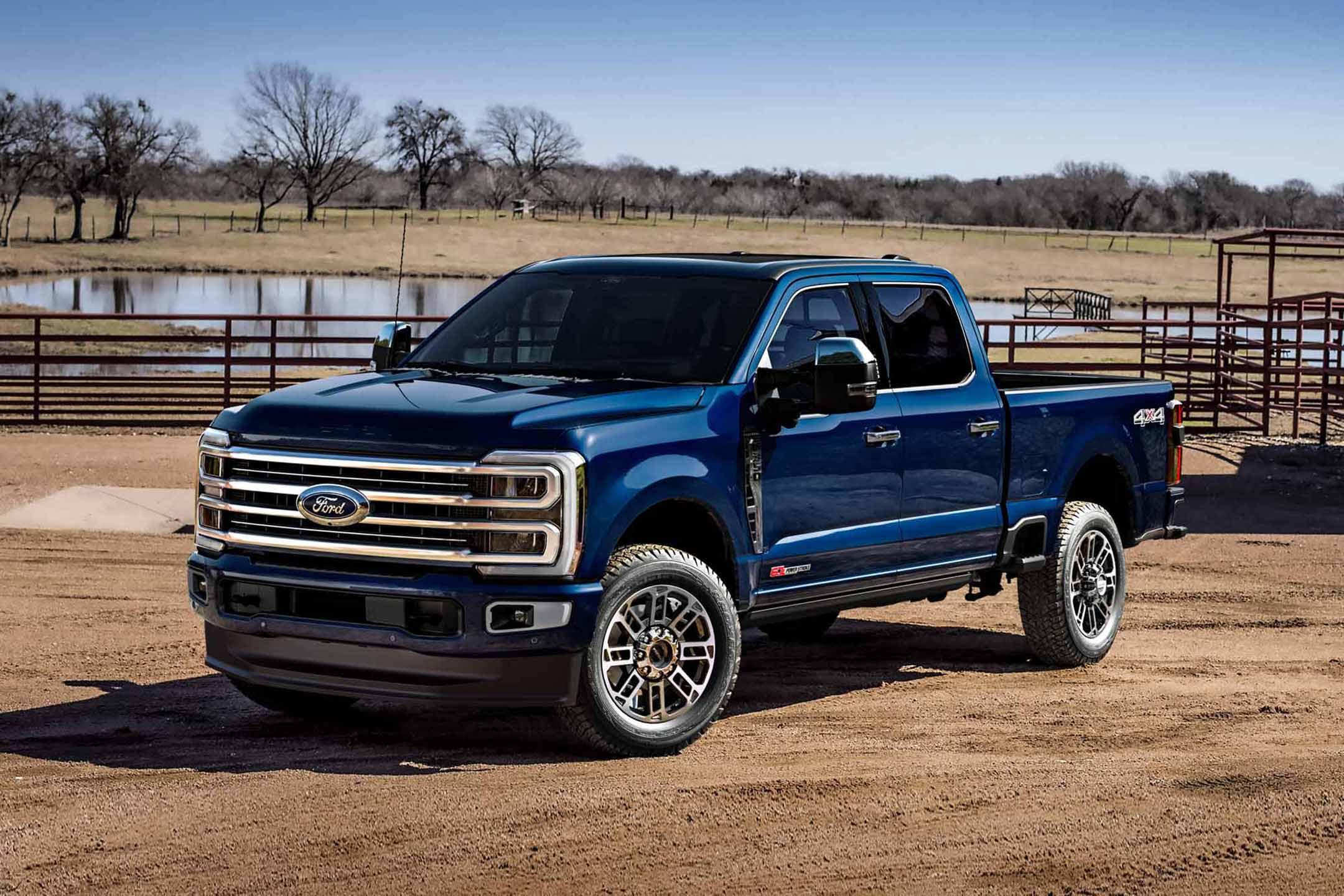
Its sturdy chassis and frame are built to take a beating, whether it’s on a construction site or a rough country road. Additionally, its suspension system is designed to carry heavy loads without compromising balance or ride quality.
Aside from raw strength, the F-250 also delivers comfort and technology that support long workdays. Features like trailer sway control, integrated trailer brake controller, and a user-friendly towing camera system make heavy hauling less stressful.
Plus, the spacious interior means workers can travel in comfort between job sites. Parts and servicing are widely available, keeping downtime minimal and repair costs reasonable.
Ford also offers extensive upfitting options, making the F-250 adaptable for different professions.
The Ford F-250 Super Duty earns its place as a top workhorse by delivering consistent strength, endurance, and adaptability. It’s a truck built to work—and it does that job exceptionally well.
2. Toyota Land Cruiser
The Toyota Land Cruiser is legendary for a reason—it’s one of the most rugged, long-lasting SUVs ever built. Although it’s often seen as a luxurious off-roader, at its core, the Land Cruiser is designed for work, not just comfort.
For decades, it has been the go-to vehicle in some of the harshest environments on Earth. From deserts and mountain trails to rural farmlands and international expeditions, the Land Cruiser continues to earn its workhorse title thanks to its unmatched dependability and tough engineering.
Under the hood, the Land Cruiser typically features a powerful V8 engine that produces strong horsepower and torque, allowing it to tow heavy trailers, climb steep grades, and haul gear without breaking a sweat.
Its body-on-frame construction gives it incredible durability, while the full-time four-wheel-drive system ensures it can tackle mud, snow, or uneven terrain without trouble. The suspension is engineered for balance—soft enough for daily comfort but tough enough for off-road abuse.
What truly sets the Land Cruiser apart is its proven reliability. These vehicles are known to run well past 300,000 miles with proper maintenance.
The quality of the parts, the simplicity of its mechanical design, and Toyota’s commitment to long-term performance make it a low-maintenance option, even in high-stress situations.
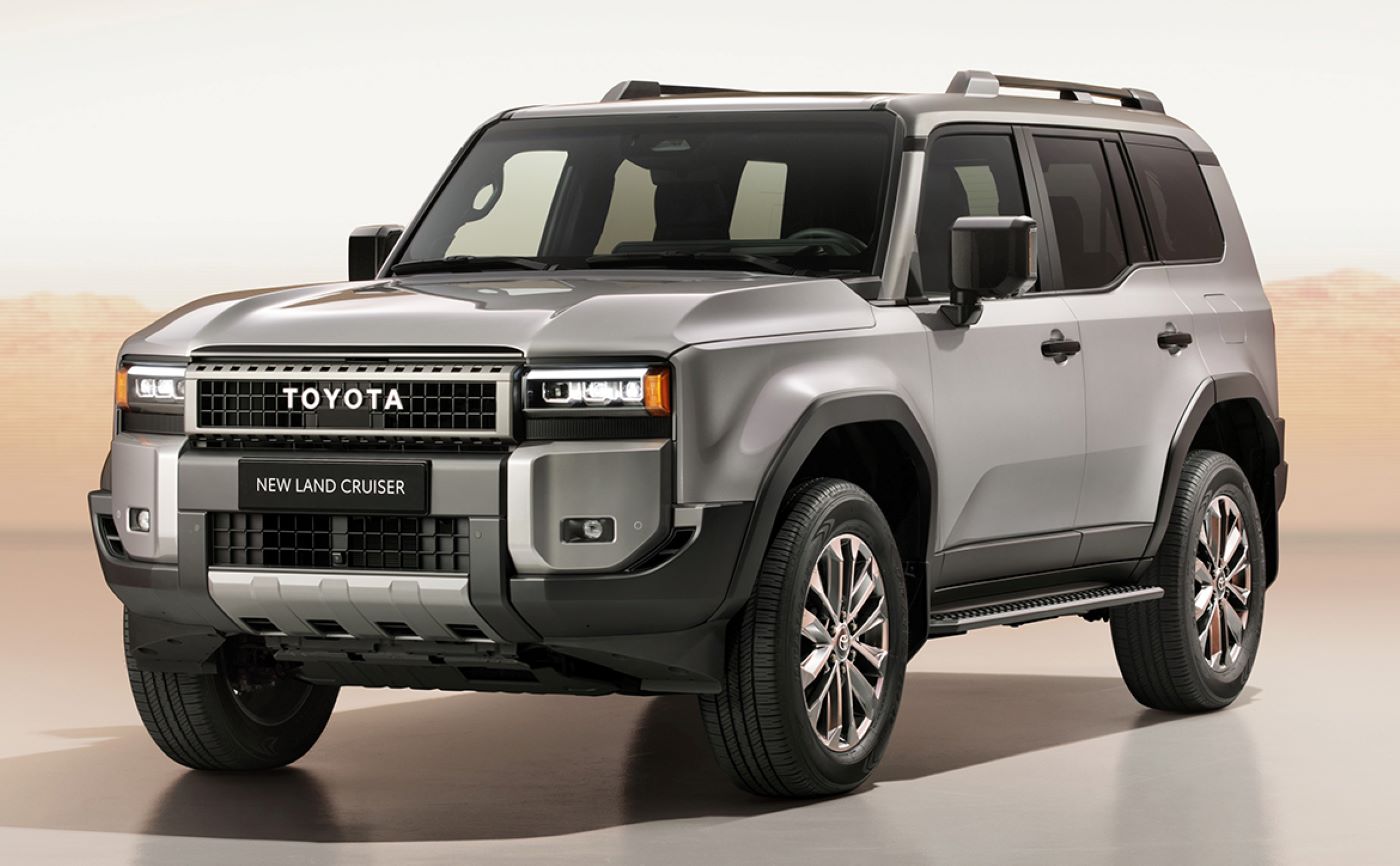
It’s a favorite for humanitarian work, safari tours, and remote operations because it just keeps going—no matter what. While its price is on the higher end, the Land Cruiser earns it back by being virtually unstoppable and exceptionally dependable over the long haul.
If you’re working in harsh conditions or remote areas and need a vehicle that can take punishment without failing, the Toyota Land Cruiser stands tall as one of the best workhorse vehicles on the planet.
3. Chevrolet Silverado 2500HD
The Chevrolet Silverado 2500HD is a heavy-duty pickup that has proven itself in job sites, farms, and commercial fleets all over the country. Known for its strong towing and hauling abilities, the 2500HD stands tall as one of the most capable trucks in the market.
It’s built for hard labor, with a design that puts function over flash. Whether you’re hauling gravel, transporting construction gear, or towing a large trailer, the Silverado 2500HD handles the load with confidence.
Chevy offers the Silverado 2500HD with either a 6.6-liter V8 gas engine or a Duramax 6.6-liter turbo-diesel V8. The diesel option is the real workhorse here, producing over 900 lb-ft of torque, which translates into a towing capacity of more than 18,000 pounds.
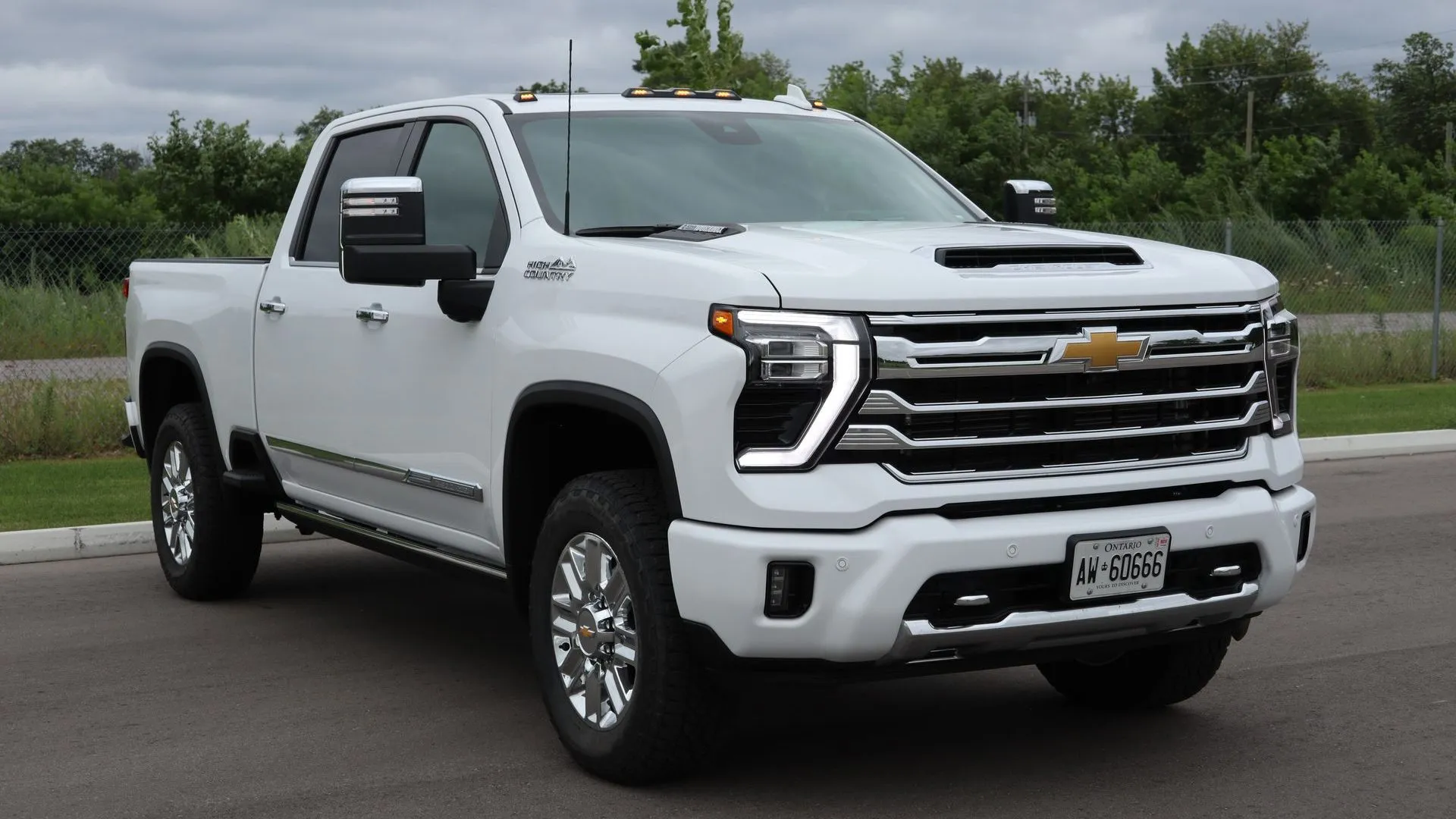
That makes it ideal for hauling heavy loads like boats, RVs, or machinery. The 2500HD’s reinforced steel frame and upgraded suspension provide stability under stress, while its larger brakes ensure better control when carrying weight.
This truck is built with the working person in mind. It features wide side steps, a high-strength steel bed, a rear camera for trailer alignment, and multiple tie-down points for cargo.
The interior is basic but functional, with durable materials that can stand up to dirty boots and rough days.
Despite its ruggedness, it offers good ride comfort and plenty of space inside the cab for longer drives. Parts are easily available across the U.S., and maintenance costs are reasonable for a truck in this category.
The Chevrolet Silverado 2500HD delivers exactly what a workhorse should—power, toughness, and reliability in every mile. It’s not flashy, but it gets the job done, no questions asked.
4. Ram 3500 Heavy Duty
The Ram 3500 Heavy Duty is a serious machine built for the toughest tasks. It is often chosen by those who need maximum towing and hauling power combined with long-term durability.
From agricultural operations and construction sites to commercial hauling, the Ram 3500 is trusted by professionals who rely on their vehicle to perform under extreme conditions. It doesn’t just look strong—it actually delivers day after day.
The Ram 3500 comes with engine choices designed for heavy-duty work, including a 6.4-liter HEMI V8 and the powerful 6.7-liter Cummins Turbo Diesel I6.
When equipped with the High-Output Cummins engine, it can produce over 1,000 lb-ft of torque and tow more than 37,000 pounds with the right configuration.
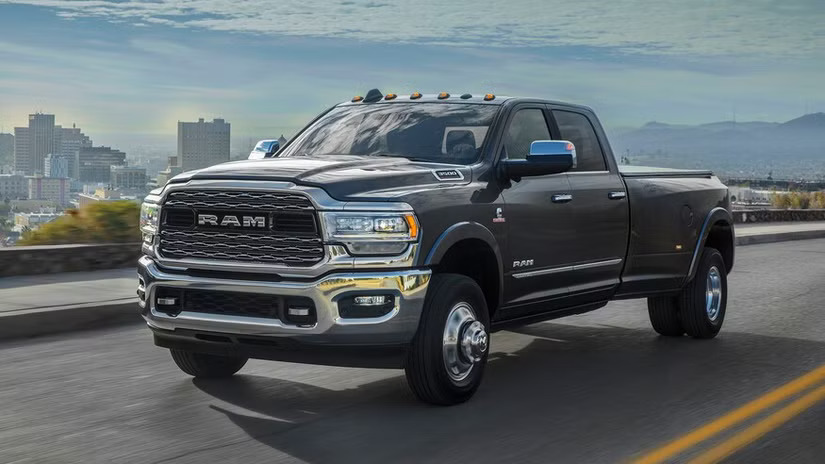
This kind of pulling power is perfect for hauling trailers, moving heavy farm equipment, or transporting large loads across long distances. The reinforced steel frame and heavy-duty suspension allow it to handle demanding conditions without strain.
The Ram 3500 doesn’t just offer strength—it also delivers smart design for workers. Its bed features LED lighting, built-in cargo tie-downs, and an available RamBox cargo management system.
It also includes advanced trailering tech like trailer reverse guidance and an integrated brake controller.
Inside, even the work-grade trims are designed with tough, easy-to-clean materials. You get a comfortable ride without sacrificing toughness.
This truck is known for long-term reliability and performance, making it one of the most dependable heavy-duty pickups on the market.
Whether you’re pulling a loaded trailer through the mountains or hauling materials on a hot job site, the Ram 3500 performs like a true workhorse without hesitation.
5. Mercedes-Benz Sprinter Van (Cargo Configuration)
While pickup trucks often dominate the conversation about work vehicles, the Mercedes-Benz Sprinter Van deserves major credit as a reliable and versatile workhorse—especially in urban and commercial settings.
It’s widely used by delivery companies, tradespeople, mobile repair businesses, and even emergency services. What makes the Sprinter so effective is not raw towing power, but its intelligent design, cargo flexibility, and strong track record for reliability in demanding use.
The Sprinter comes in multiple configurations, including different roof heights, lengths, and drivetrain options. It’s available with a turbocharged four-cylinder engine or a V6 turbo-diesel for more torque and hauling strength.
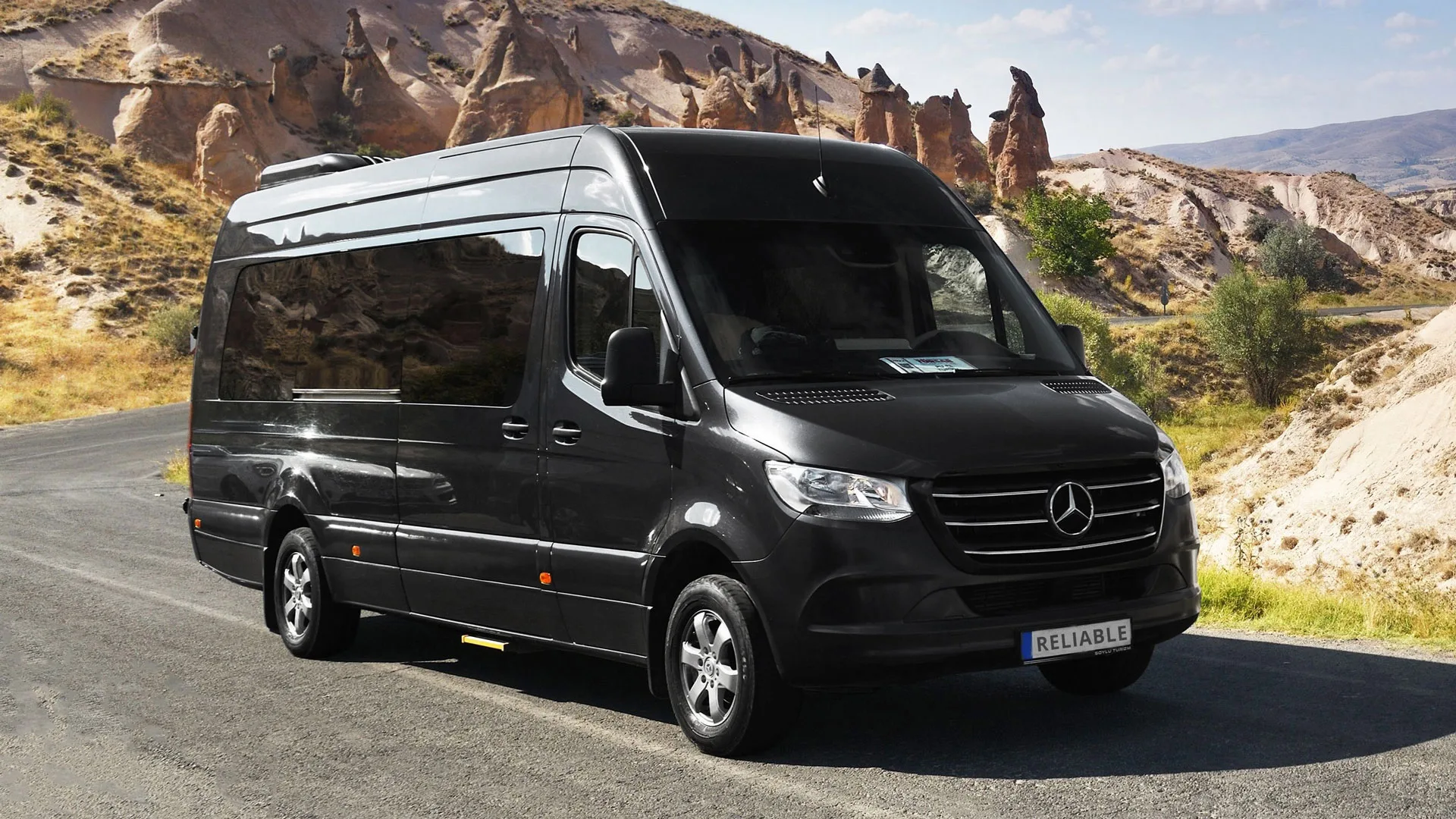
The diesel version offers great fuel economy for its size and is designed for high mileage and stop-start city use.
The Sprinter may not haul like a Ram 3500, but it can carry a heavy payload inside its large cargo bay, and it does it day after day with consistent performance.
This van is built with practicality in mind. It offers up to 532 cubic feet of cargo space depending on the setup, making it ideal for transporting tools, equipment, or products.
Rear and side doors open wide for easy loading, and many models come with smart tech like navigation, fleet tracking, and driver assistance features.
The build quality is top-tier, with many units easily passing 200,000 or even 300,000 miles when properly maintained. It’s also known for comfortable seating, which is important for workers who spend long hours behind the wheel.
The Mercedes-Benz Sprinter Van may not look like a traditional workhorse, but in the world of logistics and commercial service, it delivers strength, reliability, and space like few others can.
5 Vehicles That Fail as Workhorses
Not every vehicle is built to carry the burden of heavy-duty tasks. While some look tough or come with bold marketing claims, they simply can’t keep up with the demands of real work.
In the world of workhorse vehicles, durability, practicality, and long-term dependability are far more important than flashy looks or luxury features.
When vehicles fall short in these areas, they become more of a liability than an asset—especially when they are expected to tow, haul, or survive daily wear and tear on tough job sites or rural roads.
In this section, we’ll explore five vehicles that often fail to meet the basic standards expected of a reliable workhorse.
These models might offer stylish interiors, good infotainment systems, or strong marketing, but in practice, they suffer from mechanical problems, weak towing performance, limited cargo space, or a lack of rugged features.
Some have poor reliability ratings, others have expensive repair costs, and a few simply weren’t designed with heavy-duty use in mind—even if they try to look the part.
Choosing a vehicle that isn’t up to the task can lead to frustration, costly breakdowns, and lost time. That’s why it’s so important to avoid vehicles that promise more than they deliver when it comes to work.
These five examples serve as a reminder that not all vehicles with a “tough” image are suitable for tough work. Understanding their shortcomings can help buyers make smarter choices and avoid the hidden risks that come with choosing the wrong tool for the job.
Let’s take a closer look at five vehicles that fall short as dependable workhorses—where the flaws aren’t always obvious until it’s too late.
1. Nissan Titan XD
The Nissan Titan XD was introduced as a “tweener” truck—meant to offer more strength than a standard half-ton pickup but without the bulk and cost of a full heavy-duty model. Unfortunately, this in-between approach turned out to be its downfall.
The Titan XD didn’t quite match the capabilities of true heavy-duty trucks like the Ford F-250 or Ram 2500, yet it also lacked the refinement and fuel efficiency of light-duty competitors. This made it difficult to classify and even harder to recommend as a reliable workhorse.
The Titan XD once came with a 5.0-liter Cummins turbo-diesel V8, which sounded promising on paper. However, the engine was underpowered for serious hauling and overbuilt for daily driving.
It offered decent towing—up to around 11,000 pounds—but many full-size gas trucks matched or exceeded this.
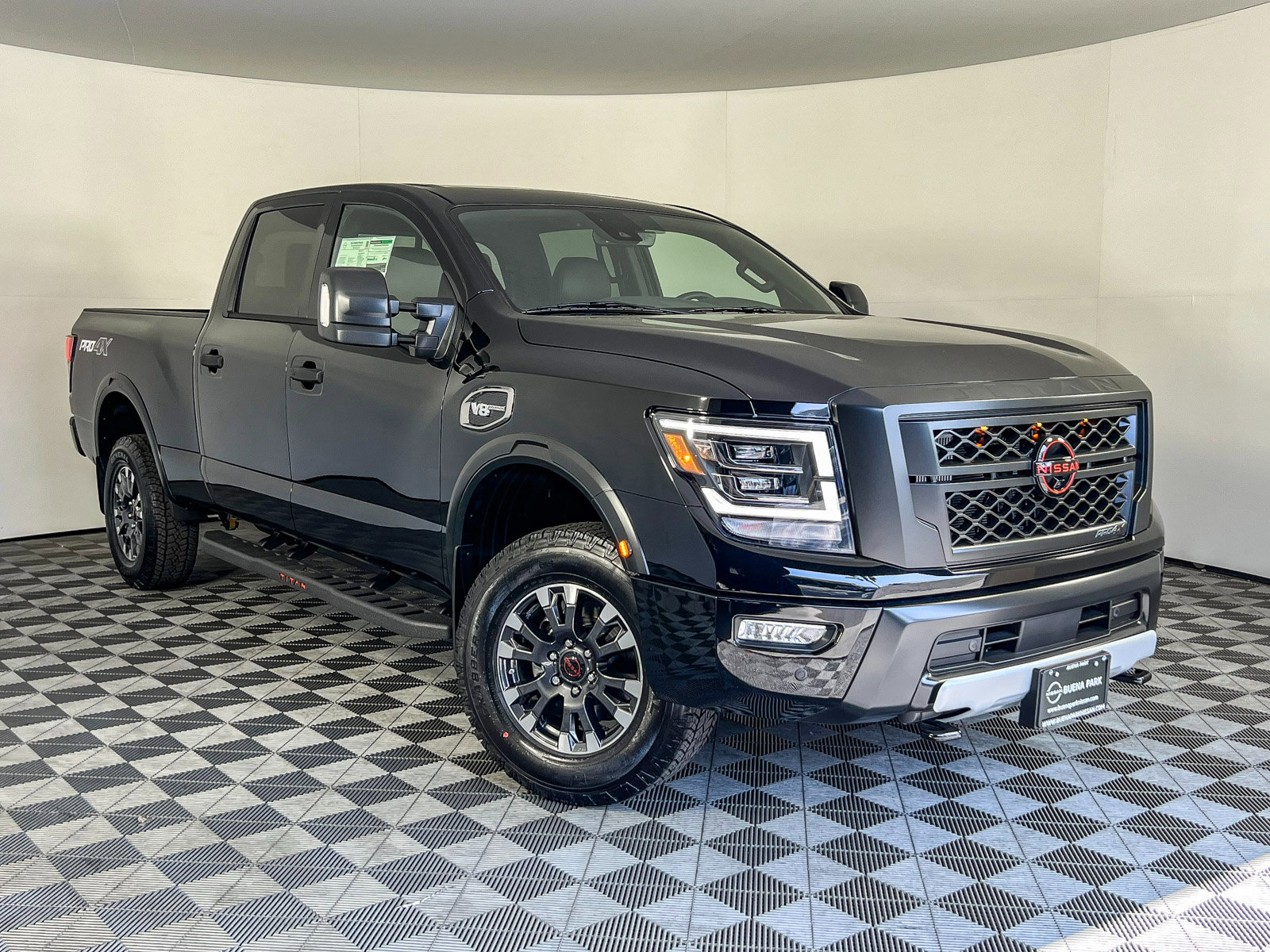
Worse, the diesel option was discontinued due to poor sales and lack of market appeal. Reliability concerns also emerged, particularly with the diesel engine’s complexity and maintenance costs.
For people relying on a truck for tough work, the Titan XD often disappointed. Owners reported transmission problems, suspension wear, and inconsistent towing performance under heavy load. Its awkward place in the market meant it lacked a clear purpose.
It wasn’t efficient enough for daily commutes or strong enough for serious work. Add in weak resale value and limited aftermarket support, and you have a truck that fails to deliver where it matters most.
In the end, the Nissan Titan XD tried to do too much and didn’t excel at anything. For demanding work, there are simply better options available with proven track records.
2. Chevrolet Colorado ZR2
The Chevrolet Colorado ZR2 is a mid-size truck with a bold, off-road image. It’s equipped with upgraded suspension, locking differentials, and aggressive styling that appeals to adventure seekers.
However, while it shines on trails and weekend getaways, it falls short when it comes to real workhorse duties like daily towing, heavy hauling, or long-term durability under worksite stress. Simply put, the ZR2 is more of a toy than a tool.
The ZR2 is built for off-road performance, not payload or towing strength. Its suspension, though excellent for crawling over rocks or navigating rough terrain, is not designed for carrying heavy loads in the bed or pulling trailers consistently.
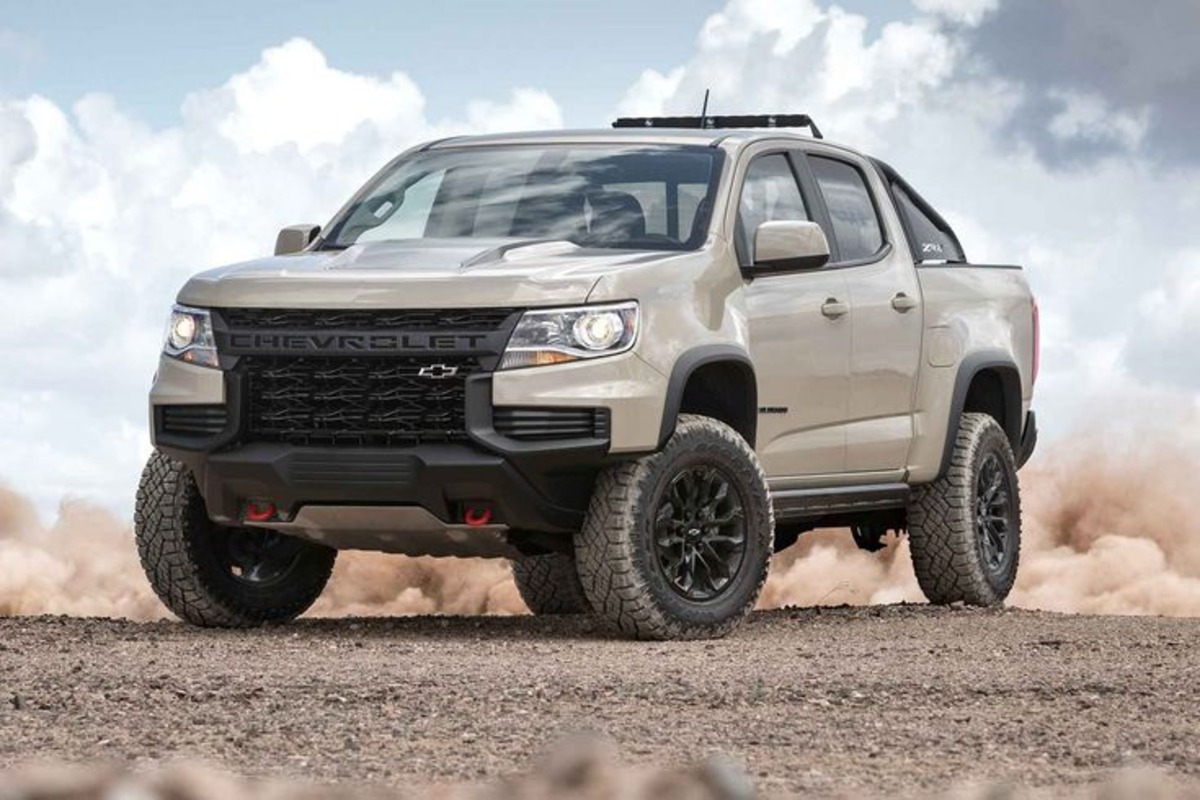
With a payload capacity of just under 1,400 pounds and a towing limit around 5,000 pounds, it lags behind even some base-model full-size trucks. The off-road tires and higher ride height also reduce fuel efficiency and increase wear on parts when used daily for job-related tasks.
While the ZR2 might turn heads at a trailhead, it’s not a smart choice for someone who needs a truck to perform heavy-duty tasks regularly. It lacks the robust frame and drivetrain strength required for commercial or farm use.
Owners who tried to push it as a work truck often encountered issues with suspension durability, bed space limitations, and high maintenance costs.
The Colorado ZR2 is a fun, capable off-roader—but if your focus is reliable, long-term work performance, it’s better to skip this flashy package and invest in something built to handle serious labor.
3. Ford Edge
The Ford Edge is a mid-size SUV that is more often seen in urban environments than on construction sites or job fields.
While it offers decent performance for everyday commuting and a smooth ride, the Ford Edge fails to deliver on the heavy-duty capabilities that are expected from a workhorse vehicle.
Its design, focused more on comfort and style, makes it ill-suited for the demands of strenuous work environments.
Performance and Towing Limitations
The Ford Edge comes equipped with a 2.0-liter turbocharged four-cylinder engine or a more powerful 2.7-liter V6 in its higher trims. While both engines are adequate for daily driving, they simply aren’t designed for heavy towing or hauling.
The Edge can tow a maximum of 3,500 pounds, which is significantly lower than many pickup trucks or larger SUVs in the market.
Furthermore, the Edge’s towing capacity is not the only downside; its cargo capacity also fails to impress when compared to work-focused vehicles.
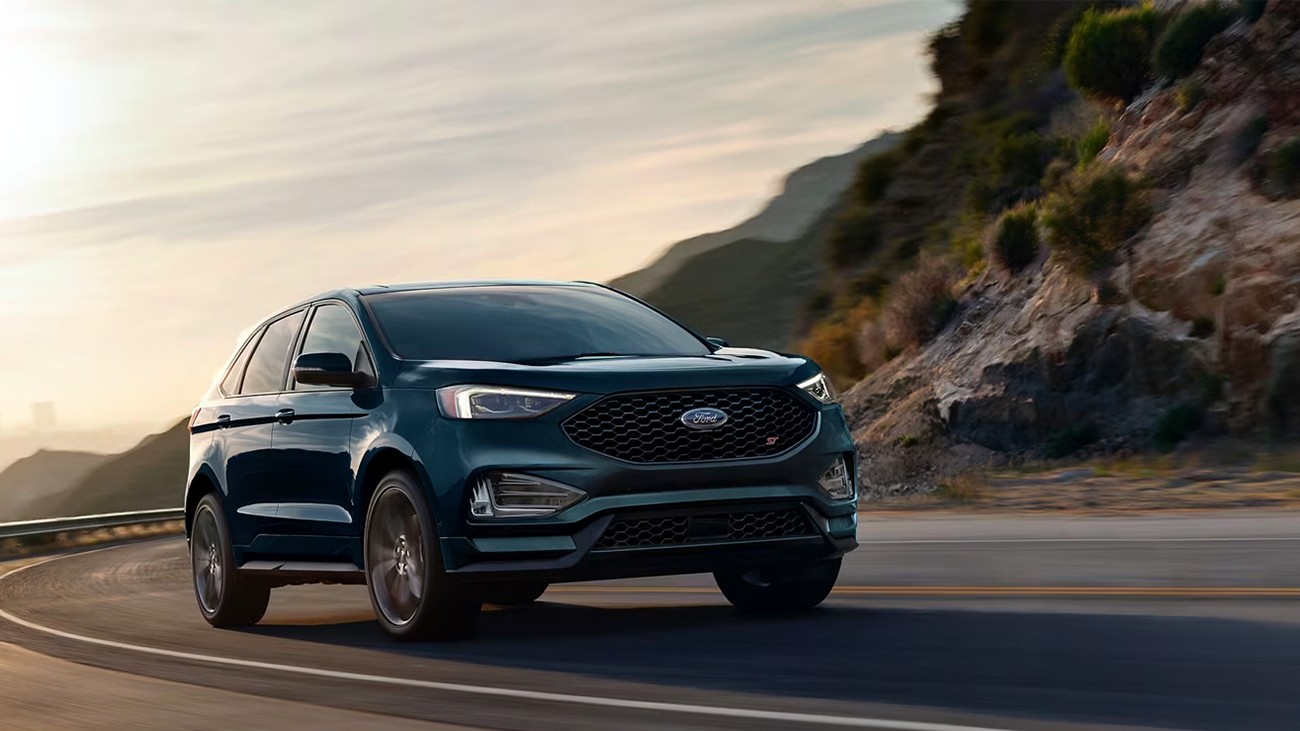
With just over 73 cubic feet of maximum cargo space, it’s simply too small for those needing to carry tools, equipment, or large loads.
The Ford Edge is a comfortable ride, but it’s not designed for heavy-duty work. Its unibody construction, while great for handling urban roads, lacks the rugged frame needed for real-world work environments.
For people who need a vehicle that can endure rough conditions, the Ford Edge simply can’t keep up. Whether it’s for towing, hauling, or long-term durability, the Edge falls short and leaves its drivers looking for something more robust.
If you need a practical vehicle for hard labor, you should look elsewhere—there are plenty of options that prioritize durability, strength, and reliability over style.
4. Honda Ridgeline
The Honda Ridgeline is marketed as a versatile and practical pickup, with a smooth ride and plenty of technology.
However, despite its innovative design and unique unibody construction, the Ridgeline struggles when compared to more traditional trucks in terms of raw workhorse capabilities.
It’s more of a lifestyle vehicle than a tool for heavy-duty tasks, and this becomes evident when you need a truck for tough, physical labor.
The Ridgeline’s towing capacity tops out at 5,000 pounds, which is acceptable for lighter-duty tasks like pulling a small trailer or a boat, but far less than what full-size trucks can handle.
When it comes to payload, the Ridgeline offers 1,500 pounds in the bed, which is also relatively low for a vehicle in its class.
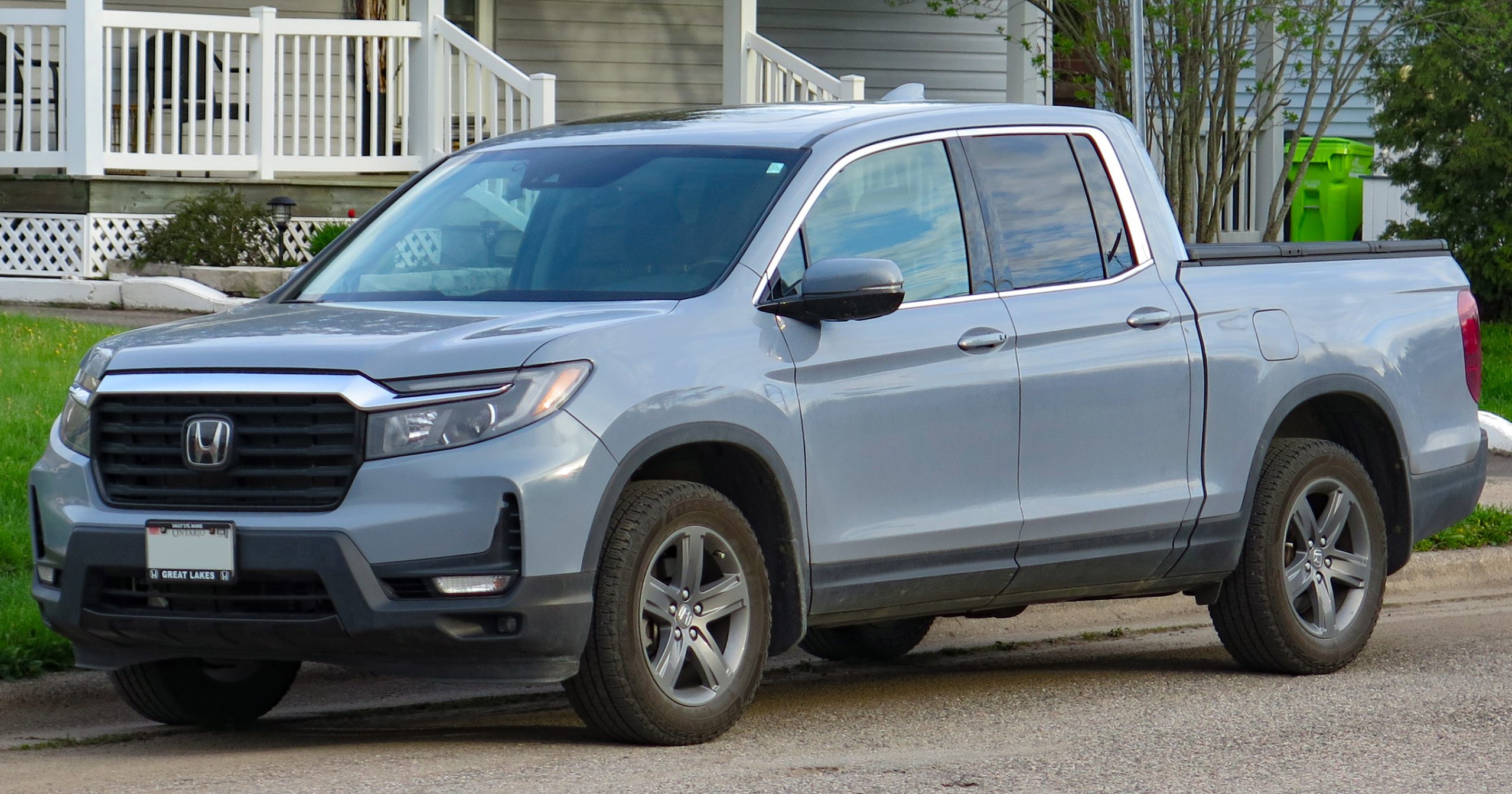
While these figures are sufficient for basic consumer use, they fall short when you need to haul construction materials, large equipment, or other heavy loads regularly.
Though the Ridgeline is praised for its smooth ride and car-like handling, these features come at the expense of the rugged durability and heavy-duty performance required in real-world work environments.
The unibody construction, which offers a more car-like feel, makes the Ridgeline less durable when faced with the rough conditions of construction sites, farms, or off-road work.
Additionally, the bed design, though innovative, lacks the utility features and strength found in traditional truck beds, making it impractical for many heavy-duty tasks.
While the Honda Ridgeline is a great choice for urban commuters or light-duty work, it falls short when it comes to serious, long-term workhorse reliability.
5. Jeep Grand Cherokee
The Jeep Grand Cherokee is a well-regarded mid-size SUV, known for its off-road capabilities and luxurious interior. While it excels at handling rough terrain and offers a comfortable ride for daily commutes, the Grand Cherokee falls short as a workhorse.
It’s not designed to handle the demands of hard labor, heavy towing, or consistent, heavy-duty use. For those in need of a true work vehicle, the Grand Cherokee simply doesn’t cut it.
The Grand Cherokee offers a variety of engine options, including a V6 and a V8, with decent power output for daily driving. However, while it can tow up to 7,200 pounds in its best configuration, this capacity is still far below that of full-size trucks like the Ford F-150 or Chevy Silverado.
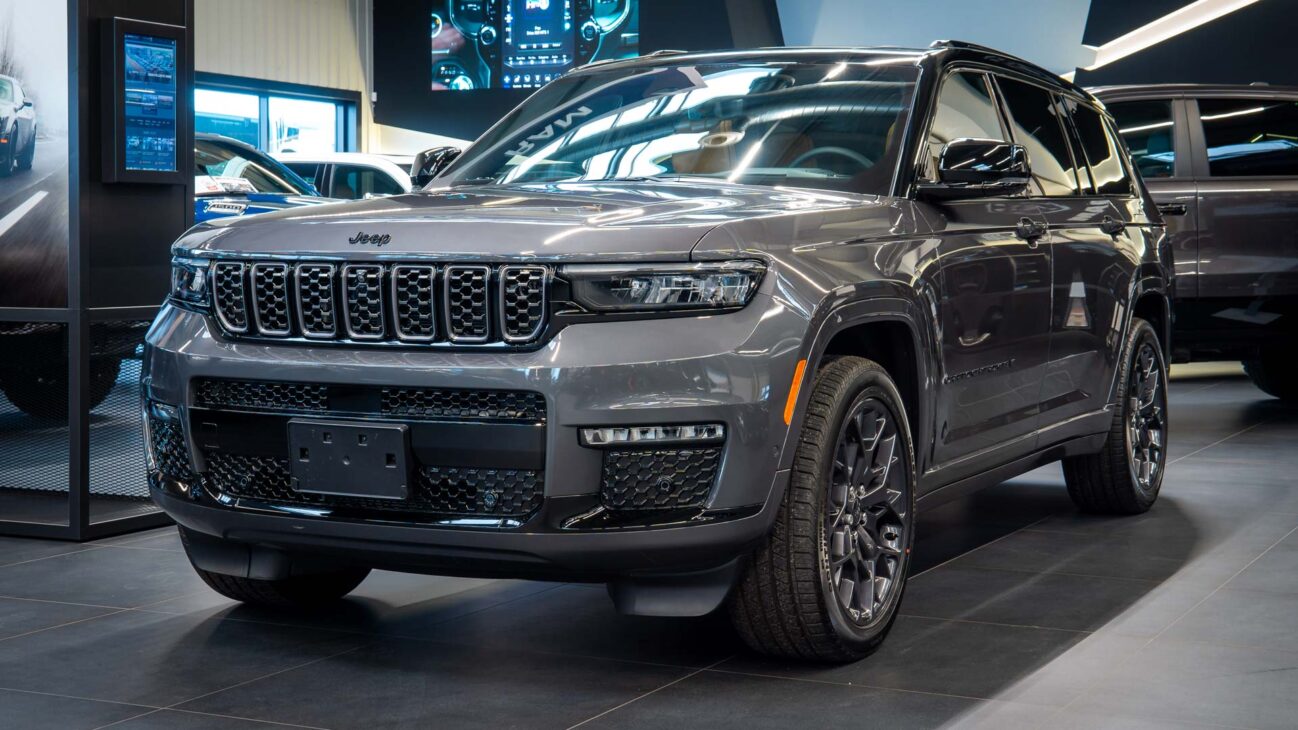
For those requiring higher towing capacities or consistent payloads, the Grand Cherokee falls behind. Additionally, its interior, though luxurious, is more focused on comfort and features than on providing rugged durability for work tasks.
While the Grand Cherokee might handle weekend projects or light hauling without issue, it’s not built for sustained work environments.
The ride quality, meant to be smooth and comfortable, can be a disadvantage when navigating bumpy job sites or hauling heavy materials. Its cargo space is limited compared to trucks, and its suspension isn’t designed for heavy-duty hauling or towing on a regular basis.
For someone who needs a reliable, durable workhorse that can handle the physical demands of a job site, the Grand Cherokee simply isn’t built for the task. It’s an excellent choice for weekend adventurers, but for heavy-duty work, it’s best to look at a true truck.
When it comes to selecting a vehicle for hard work, it’s crucial to focus on durability, strength, and reliability. Not every vehicle with a rugged appearance or impressive specs is up to the task of being a true workhorse.
While some vehicles, like the Ford F-250 and Toyota Tundra, have proven themselves over time with outstanding performance in demanding environments, others simply can’t meet the expectations of those who need serious muscle behind their work.
The vehicles listed as great workhorses, such as the Ford Super Duty and Ram 3500, are built for the long haul.
They offer exceptional towing and payload capacities, durable frames, and all-terrain capabilities. These trucks aren’t just designed for comfort or convenience—they’re tools that can withstand the strain of construction sites, farms, and long hours on the road.
On the other hand, vehicles like the Nissan Titan XD and Honda Ridgeline, while stylish and functional in certain contexts, fail to live up to the requirements of a true workhorse.
Their towing and payload limits, combined with mechanical issues and design shortcomings, make them unreliable when the going gets tough.
For those relying on a vehicle for serious work, choosing one that’s more about flair than function can result in frustrations and costly breakdowns.
In conclusion, whether you need a truck for hauling materials, towing equipment, or navigating rugged terrains, it’s essential to choose a vehicle that’s built for the job.
Opting for style over substance might work for casual driving, but when it comes to work, it’s always better to pick a vehicle that’s engineered to endure the demands of real-world labor. The right workhorse will always deliver when you need it most.
Also Read: 5 Cars That Excel in Hot Climates and 5 That Suffer

